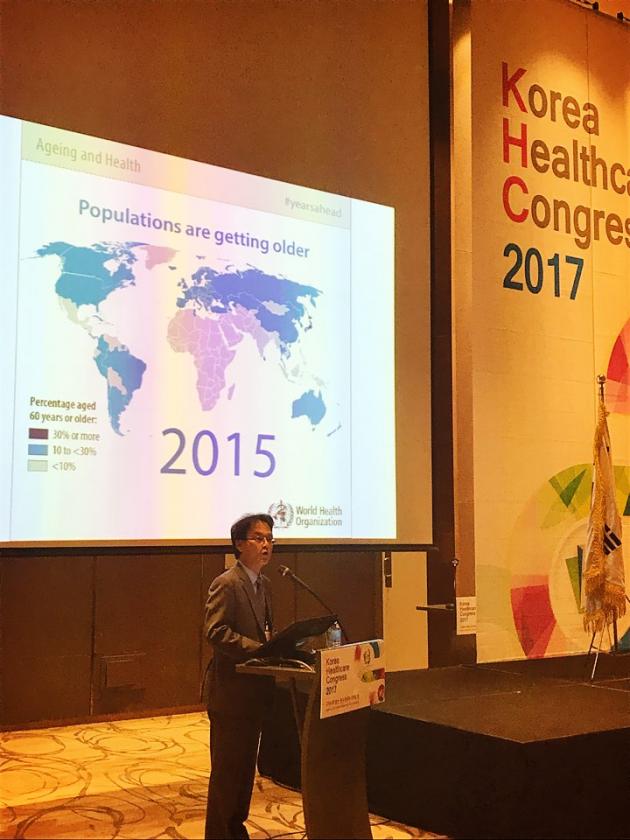Many developed nations are coming face-to-face with the problem of caring for a rapidly aging population, with different countries addressing the issue in varying ways, speakers at a symposium said Tuesday.

“When I was a university student, I considered a 70-year old person to be very old. Now when I look at a 70-year-old, I think they are pretty young,” said Arai Hidenori, deputy director of the National Center for Geriatrics and Gerontology in Japan, who spoke the Korea Healthcare Congress 2017 symposium held in downtown Seoul.
Population aging is occurring worldwide, particularly in Asian countries such as Japan, Singapore and Korea, Hidenori and other speakers said at the conference.
Japan is facing an “aging tsunami” where more than 26 percent of the 127 million people are 65 years or older. The number of the old is expected to increase to around 32 percent of the population in 2030 and 41 percent – or almost half – of the population by 2055, according to Hidenori.
More elderly are dying in hospitals, compared to other countries, Hidenori said. The number of the old dying in hospitals will increase from 1.25 million people in 2011 to around 1.7 million a year by 2037, putting a strain on hospital systems and healthcare workers.
To deal with the surmounting issue, Japan has introduced a five-year plan for the promotion of dementia care that aims to improve diagnoses, intervention, and treatment of dementia, particularly in the area of community care, Hidenori said.
Japan has invested around 40 trillion yen for medical and long-term care. For long-term care, about 50 percent is covered by a premium, 25 percent is from central government, 20 percent from local government, and the rest comes from copayment, he said.
The professor noted that Japan has also come up with two concrete approaches as an extension of dementia care: convalescence rehabilitation wards and integrated community care wards.
Convalescence rehabilitation wards have been in Japan’s medical insurance system since 2000 with the primary focus on treating strokes and hip fractures – two of the most common reasons for hospitalization among the elderly. Patients stay for around three to five months for comprehensive treatment. These wards have approximately 80,000 beds and offer three-hour rehabilitation programs every day. Patients can remain until they reach a functional plateau, the director noted.
An integrated community care (ICC) ward functions to provide a seamless transition from the hospital to home. In many cases, the elderly discharged from acute care does not go back to complete health. The ICC ward is where the patients can stay 60 days after being released from critical care.
“We need to come up with new medicines to treat dementia, but currently we have no drug,” Hidenori said. “For now, we need to detect it early and change lifestyles of individuals, while establishing a dementia-friendly society.”

